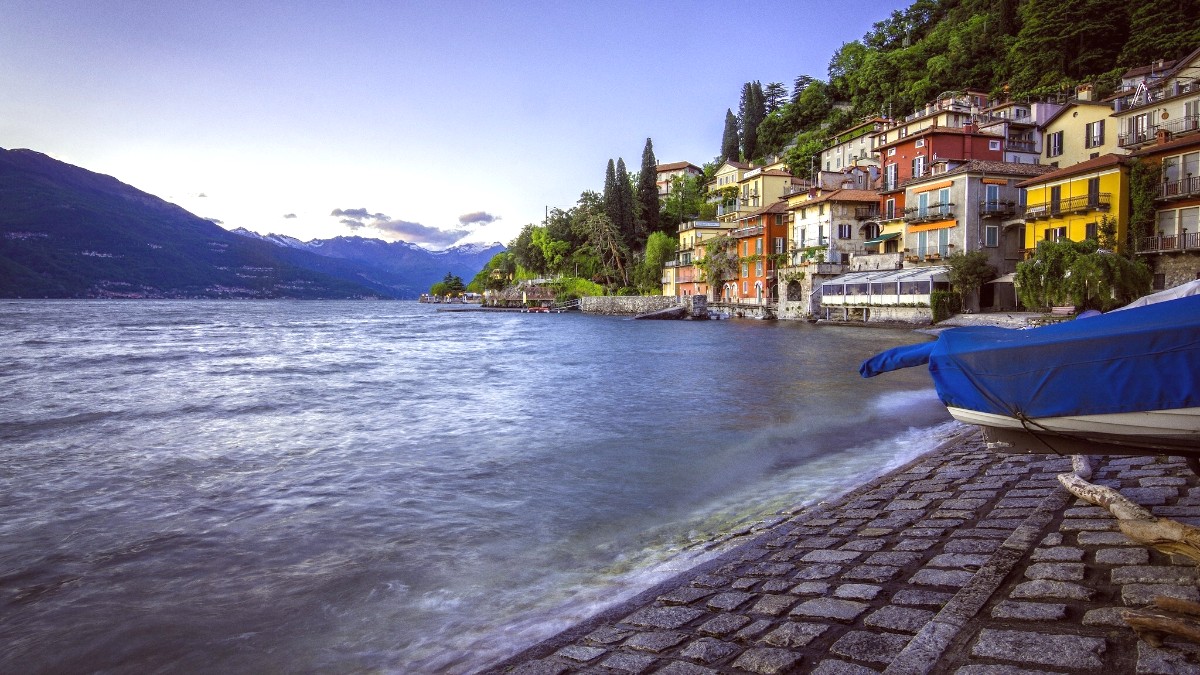
Lombardy And The Lakes, Italy
Spring (April-May): This period brings mild and pleasing temperatures, typically 10 to 20 degrees Celsius (50 to 68 degrees Fahrenheit). You can expect moderate rainfall, which keeps the landscape green and fresh without often stopping outdoor activities. Humidity levels generally stay lower, making pleasant conditions for walking and sightseeing. The air feels crisp, and blooming flowers add color to the city and countryside.
Autumn (September-October): Temperatures return to a mild and pleasant range, similar to spring, typically between 10 and 20 degrees Celsius (50 to 68 degrees Fahrenheit). While early autumn often sees minimal rain, precipitation grows as the season moves towards late October. Humidity begins to lessen, making for comfortable days. The autumn leaves, especially along the Po River, add a beautiful dimension to the landscape.
High Season (June-August): Warmer weather and longer daylight hours. Expect larger crowds and higher prices for accommodation and flights. Heat and humidity could be uncomfortable for some visitors. Shoulder Season (April-May, September-October): Highly agreeable temperatures, ideal for sightseeing. Smaller crowds and generally lower prices. Natural scenery is very appealing. Low Season (November-March): Fewest crowds, a quiet and intimate experience. Lowest prices for flights and accommodation. Weather is cold, daylight hours are short.
Summer risk
Can go above 35°C (95°F)
Stay hydrated, seek shade.
"Nebbia"
Common Nov-Jan
Reduces visibility, makes weather feel colder.
No hurricanes
Po Valley continental climate
Extreme weather events are uncommon.
Spring (April-May) and Autumn (September-October) deliver the most comfortable temperatures for long walks and exploring the city’s historic center.
The mild weather and pleasing scenery of spring and autumn make them fine for cycling on Cremona's flat land and along the Po River paths.
Music and events in summer.
Delightful culinary event in November.
Autumn is a special charm for food discovery.
Rules vary based on your nationality and the length and purpose of your visit.
Italy is a part of the Schengen Area, which includes 27 European countries. Travel within these countries is free from mutual border checks for a limited period.
If your nationality is not on the visa-exempt list, you must apply for a Schengen visa (Type C short-stay visa).
This information gives a general idea of costs for different travel styles.
The official currency in Italy, and throughout the Schengen Area, is the Euro (€).
Tipping in Italy differs from practices in some other countries. It is not mandatory or expected at the same high percentages.
This shows general price ranges for various services.
Required Vaccinations: No specific vaccinations for entry to Italy for most countries.
Recommended Vaccinations: Ensure routine vaccinations are current (MMR, DTP, Polio, annual Flu shot). Consult your doctor 4-6 weeks before your trip for personalized advice.
Italy has a modern and accessible healthcare system.
EU citizens use EHIC for public healthcare.
Non-EU citizens pay full cost without insurance.
Cremona has a main hospital and many pharmacies.
Ospedale di Cremona for emergency and general medical services.
Pharmacies ("Farmacia") for minor ailments and OTC medications.
Tap water in Cremona is generally safe to drink. Food hygiene standards are high.
Safe to drink tap water. Carry a Reusable water bottle.
Avoid food sitting out for extended periods at informal stalls.
| Category | Details | Recommendation |
|---|---|---|
| Crime Statistics | Cremona is a safe city with low crime rates. Petty crime, like pickpocketing, can occur in crowded areas. | Keep an eye on belongings. Avoid displaying large sums of cash or expensive jewelry. |
| Earthquakes | Lower-risk earthquake zone than central/southern Italy. Severe earthquakes are rare. | No specific action needed for tourists. |
| Flooding | Po River can have higher water levels after heavy rains. Major city flooding is uncommon. | Be aware near riverbanks during heavy rain. |